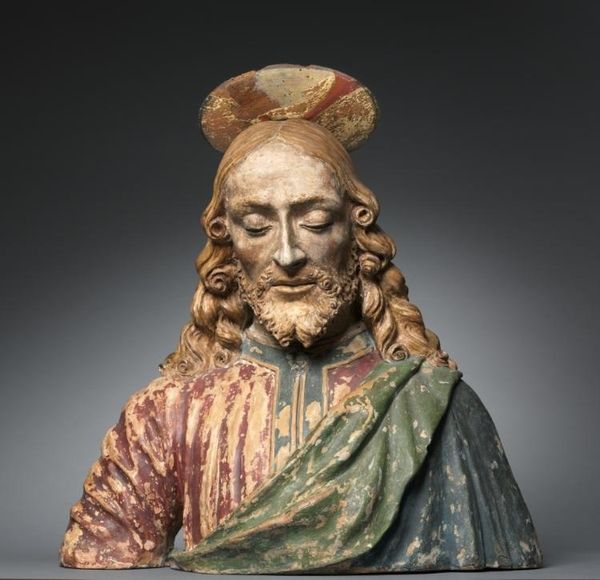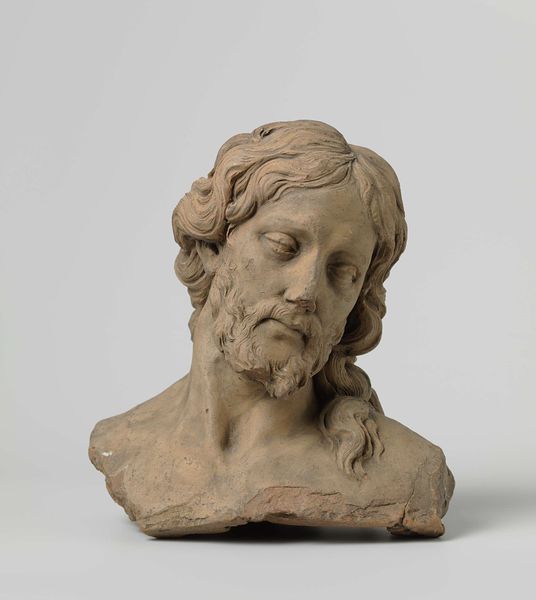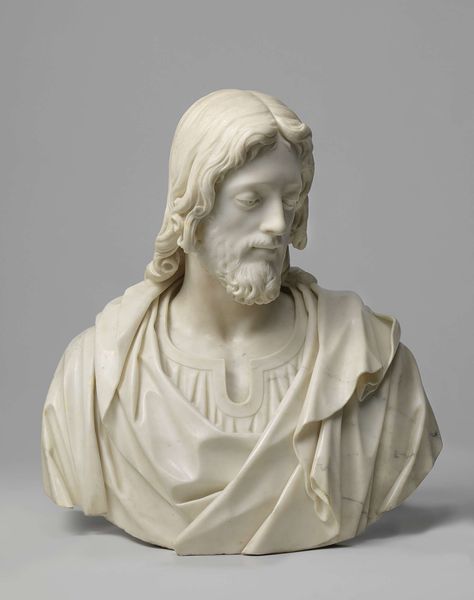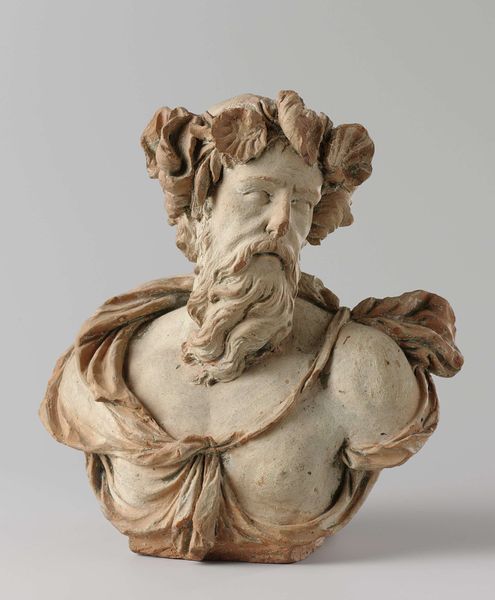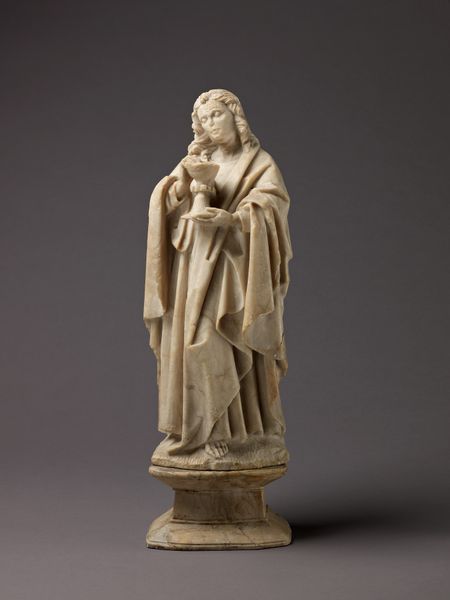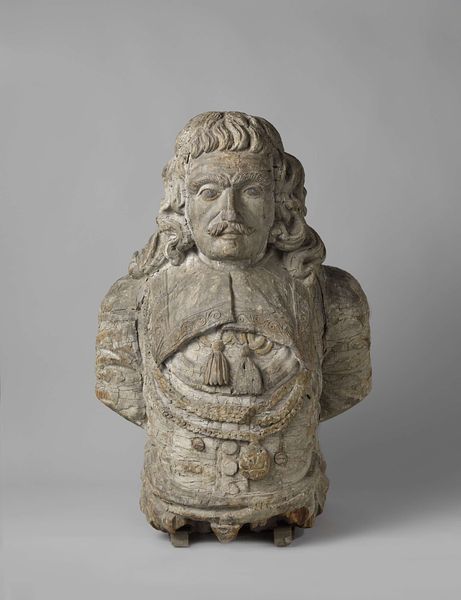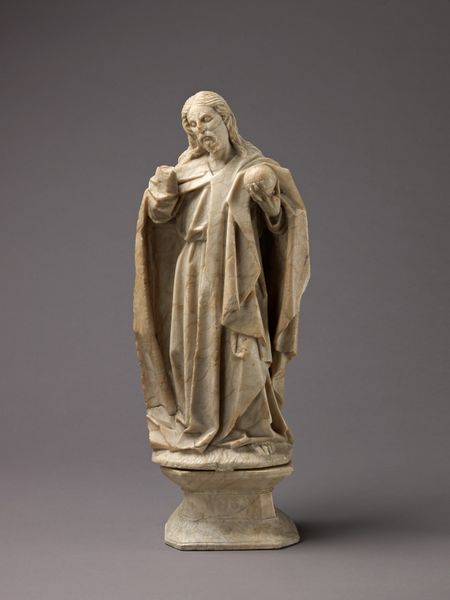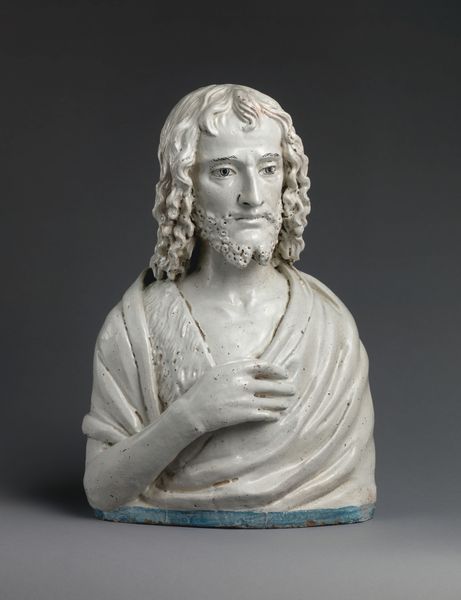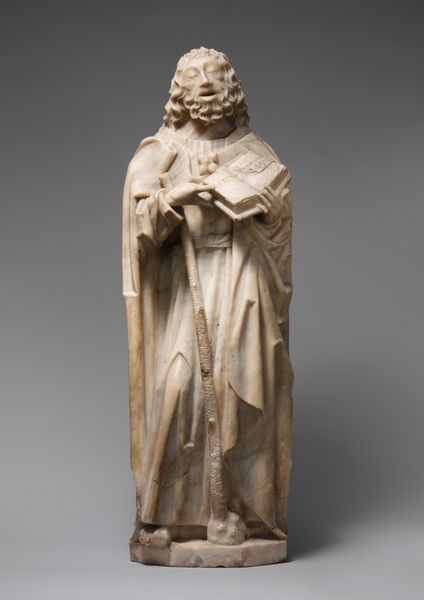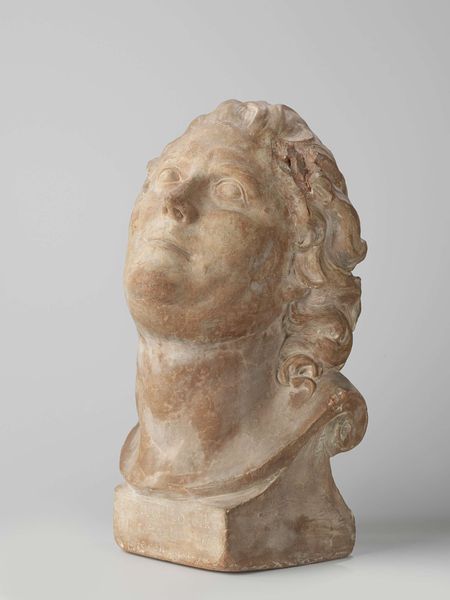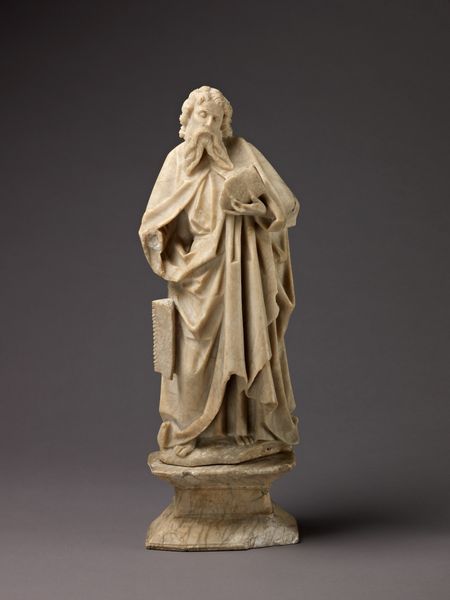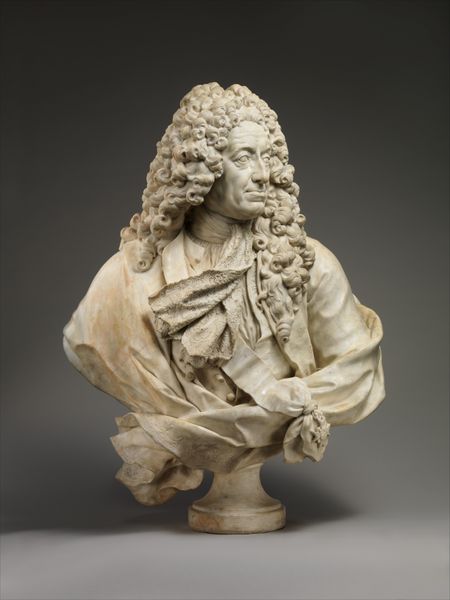
sculpture, wood
#
portrait
#
sculpture
#
figuration
#
sculpture
#
wood
#
italian-renaissance
Dimensions: height 52 cm, width 50 cm, depth 23 cm, weight 21.8 kg
Copyright: Rijks Museum: Open Domain
Curator: Let's turn our attention to "Borstbeeld van de triomferende Christus," or "Bust of the Triumphant Christ," a captivating wooden sculpture from the Italian Renaissance, created sometime between 1435 and 1488, attributed to Andrea del Verrocchio. Editor: He has such a profoundly somber affect; for someone labeled "triumphant", that subdued tone in his facial expression really catches my eye. The play of light across his face highlights that beautifully. Curator: Indeed. The choice to depict Christ not in a state of glory but with such visible humanity reflects a broader humanist trend in Renaissance art, placing increased importance on the individual experience, the public image, and an emphasis on the relatable suffering and triumphs of the figure. Editor: And how skillfully it's conveyed. Look at the soft modeling of his beard and hair, framing his face with these almost restless curls; it imbues the figure with movement, an emotional charge, which really comes through despite the sculpture's medium. There's tension between his gaze and the drapery of his robes, too. Curator: The political undercurrents of religious imagery in that period cannot be overlooked either. Verrocchio and his contemporaries were navigating complex relationships with the Church and powerful patrons. This image, while deeply spiritual, also asserts a degree of artistic independence in its representational choices, allowing a more personal interaction with viewers and subtly shaping their beliefs and allegiance. Editor: I'm seeing that independence echoed in the carving of the drapery. The lines, despite their formality, direct my attention. I'm drawn back to the sculpture's gaze and the tension I observed earlier between subject and execution. Curator: The use of wood as a material—not typically associated with grand, imposing works—also speaks volumes about the intended audience and location for this piece. It perhaps was intended for a smaller, more intimate devotional setting where this kind of personal, emotional connection was favored. Editor: Looking at this again now I can see its almost rough unfinished state as well adding to the sense of immediacy and intimacy. So interesting to consider the intention that choice held as it now impacts my sense of the work. Curator: A powerful illustration of art’s dual function—aesthetic beauty alongside subtle persuasive influence—shaping cultural perceptions over time. Editor: Yes, a lasting testament to the profound depth achievable when skill serves social and philosophical engagement.
Comments
No comments
Be the first to comment and join the conversation on the ultimate creative platform.
